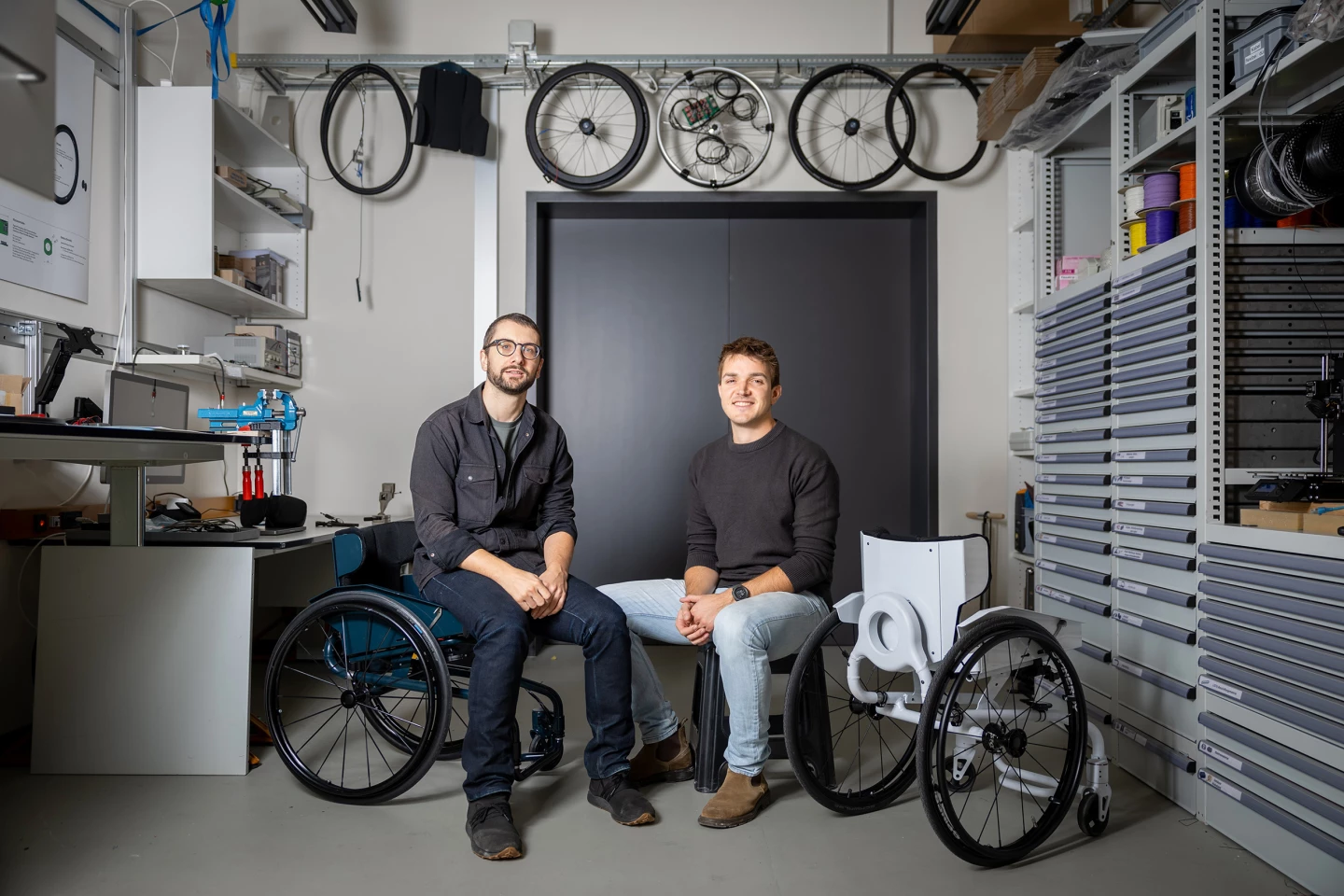Steering a wheelchair to the left or right can be a strenuous, inefficient process, in that you have to brake with one rear wheel while pushing harder on the other. A clever new chair addresses that problem in a brilliant fashion, by using a moveable backrest to steer.
The big problem with traditional wheelchairs is the two front caster wheels, which passively swivel like the wheels of a shopping cart. Although they do allow the chair to pivot on the spot, they don't stay firmly pointing in any one direction.
This means that if the wheelchair user is trying to move forward along a surface that slopes to one side, for instance, the front wheels will automatically turn to face down that slope. As a result, the user has to continuously counter-steer in order to compensate.
Not only does doing so use up a considerable amount of energy that could have all gone into forward movement, it also places a lot of stress on the user's shoulders, arms and hands.
Things would be much easier if the front wheels could be steered like those of a car. It would be even better if the steering system left the user's arms free, so the muscle power of both of them could be used solely for propulsion. Alternatively, one arm could be utilized to move the chair forward while the other could be used to hold a smartphone, coffee cup or something else.
That's where the new wheelchair comes in. It's being developed by Reto Togni and Stefan Villiger, both of whom are research assistants at ETH Zurich’s Laboratory for Movement Biomechanics.

The chair's user is able to tilt its backrest to the left or right simply by leaning their body accordingly. A purely mechanical linkage system responds by turning the front wheels in the corresponding direction, and keeping them from wavering from that orientation. Stopping is still performed in the usual manner, by grabbing and slowing both back wheels.
In a test of the technology, the scientists had 29 volunteers make six consecutive runs through an obstacle course (pictured below), first in a regular wheelchair and then in the new one. Sensors in the rear drive wheels of both chairs showed that the participants used considerably less energy when utilizing the backrest-steered wheelchair.

It was even found that when simply moving straight forward, the new chair allowed test subjects to go faster than they could in the traditional chair, but with less effort. The one thing the new chair isn't as good at is pivoting on the spot. For that reason, it has a lever that can be used to temporarily disengage the steering system, thus allowing the front wheels to passively swivel.
Togni and Villiger are now commercializing their chair through ETH Zurich spinoff company Versive. They hope to have a product on the market by mid-2027.
"There are still moments when we’re practically swept off our feet by the simplicity of our idea – and the many advantages it offers," says Togni.
You can see the wheelchair in action, in the video below.
Source: ETH Zurich







